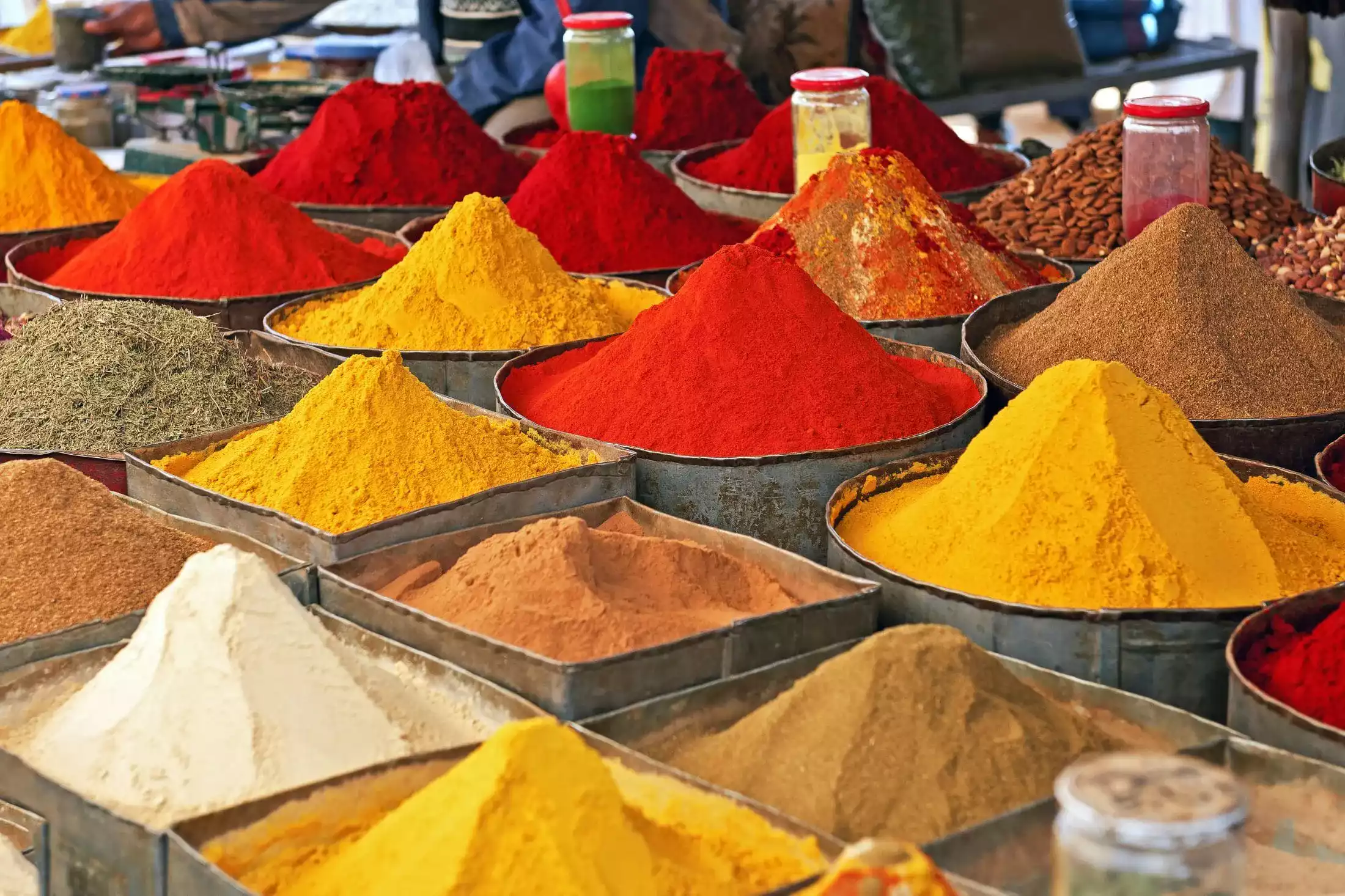
When visiting Morocco, you’ll find a wealth of spices that are integral to the country’s rich culinary tradition. Here are some of the best and most iconic spices to bring back from Morocco:
1. Saffron (Zafran)
- Where it comes from: Saffron is primarily grown in the Taliouine region of Morocco.
- What it’s used for: Saffron is prized for its distinct flavor, aroma, and vibrant color. It’s used in a variety of dishes, from tagines to couscous, and even desserts.
2. Ras el Hanout
- What it is: A complex spice blend made up of various spices like cumin, coriander, cinnamon, ginger, turmeric, and more. Each vendor might have their own unique mix.
- What it’s used for: It’s used in many traditional Moroccan dishes, including tagines, grilled meats, and couscous. It’s one of the most emblematic spice blends of Moroccan cuisine.
3. Cumin (Kamoun)
- What it is: One of the most widely used spices in Morocco.
- What it’s used for: Cumin is a staple in Moroccan cooking, often used in meat dishes, tagines, salads, and even as a seasoning for bread. Moroccans sometimes serve ground cumin alongside salt as a condiment.
4. Cinnamon (Qerfa)
- What it is: Known for its sweet and warm flavor.
- What it’s used for: Cinnamon is used in both sweet and savory dishes in Morocco, from tagines with meat and dried fruits to desserts like almond pastries and spiced teas.
5. Paprika (Felfla Hloua)
- What it is: A mild and sweet red pepper powder.
- What it’s used for: Paprika is used to add color and subtle flavor to stews, tagines, and salads. Smoked paprika is also popular in Moroccan cuisine.
6. Turmeric (Kourkoum)
- What it is: A vibrant yellow spice with earthy and slightly bitter notes.
- What it’s used for: Turmeric is commonly used in tagines, soups, and rice dishes, and is valued for both its flavor and its health benefits.
7. Ginger (Skindjbir)
- What it is: Ground ginger is commonly used in Moroccan spice blends.
- What it’s used for: Ginger is used in many savory dishes, such as tagines and soups, and is also added to sweet dishes and tea.
8. Anise Seeds (Nafa’a)
- What it is: Small, aromatic seeds with a sweet, licorice-like flavor.
- What it’s used for: Anise seeds are often used in baking Moroccan breads, cookies, and pastries, as well as in teas.
9. Fenugreek (Helba)
- What it is: An aromatic seed with a slightly bitter taste.
- What it’s used for: Fenugreek is often used in spice blends like Ras el Hanout and is used in traditional Moroccan soups and tagines.
10. Harissa (Chili Paste)
- What it is: A spicy chili paste made from dried red chilies, garlic, olive oil, and various spices.
- What it’s used for: Harissa is often used as a condiment, marinade, or ingredient to add heat and flavor to a variety of dishes, from couscous to grilled meats.
11. Preserved Lemons
- What it is: Although not a spice in the traditional sense, preserved lemons are an essential ingredient in Moroccan cooking, used to add a tangy, salty flavor to dishes.
- What it’s used for: They are frequently added to tagines, salads, and stews.
12. Nigella Seeds (Sanouj)
- What it is: Also known as black cumin or black seed, these tiny black seeds have a slightly bitter, nutty flavor.
- What it’s used for: Nigella seeds are often sprinkled on bread or added to spice mixes and salads.
Where to Buy:
In Morocco, you can find these spices in local markets (souks) in cities like Marrakech, Fez, and Casablanca. The souks are filled with spice vendors offering freshly ground spices that are often more aromatic and flavorful than what you might find elsewhere. When buying, it’s best to shop around, ask the vendors about their blends, and perhaps even sample a bit before purchasing.
These spices are a reflection of the vibrant flavors of Moroccan cuisine and make for excellent souvenirs that allow you to bring a taste of Morocco home with you.
Was this helpful?
0 / 0







